 W
WA computer terminal is an electronic or electromechanical hardware device that can be used for entering data into, and transcribing data from, a computer or a computing system. The teletype was an example of an early day hardcopy terminal, and predated the use of a computer screen by decades.
 W
WAnderson Jacobson, also known for a time as CXR Anderson Jacobson and today as CXR Networks, is a vendor of communications equipment. Anderson Jacobson was an early manufacturer of acoustic modems and was spun off from SRI International. In the 1970s and 1980s, the company manufactured modems, some intended for consumers. The company was acquired by CXR Telecom in 1988, at which time The Times was following Anderson Jacobson's earnings reports. The flow of new products continued.
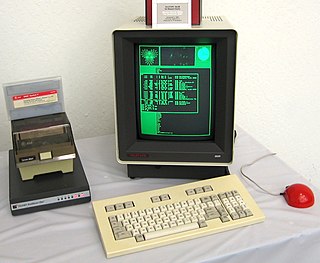 W
WIn computing, the Blit was a programmable bitmap graphics terminal designed by Rob Pike and Bart Locanthi Jr. of Bell Labs in 1982.
 W
WA computer terminal is an electronic or electromechanical hardware device that can be used for entering data into, and transcribing data from, a computer or a computing system. The teletype was an example of an early day hardcopy terminal, and predated the use of a computer screen by decades.
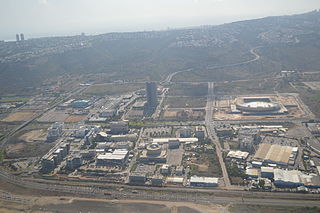 W
WChip PC Technologies is a developer and manufacturer of thin client solutions and management software for server-based computing; where in a network architecture applications are deployed, managed and can be fully executed on the server.
 W
WWyse is an American manufacturer of cloud computing systems. They are best known for their video terminal line introduced in the 1980s, which competed with the market leading Digital. They also had a successful line of IBM PC compatible workstations in the mid-to-late 1980s, but were outcompeted by companies such as Dell starting late in the decade. Current products include thin client hardware and software as well as desktop virtualization solutions. Other products include cloud software-supporting desktop computers, laptops, and mobile devices. Dell Cloud Client Computing is partnered with IT vendors such as Citrix, IBM, Microsoft, and VMware.
 W
WThe Friden Flexowriter was a teleprinter, a heavy-duty electric typewriter capable of being driven not only by a human typing, but also automatically by several methods, including direct attachment to a computer and by use of paper tape.
 W
WA computer terminal is an electronic or electromechanical hardware device that can be used for entering data into, and transcribing data from, a computer or a computing system. The teletype was an example of an early day hardcopy terminal, and predated the use of a computer screen by decades.
 W
WThe Hazeltine 1500 was a popular smart terminal introduced by Hazeltine Corporation in April 1977 at a price of $1,125. Using a microprocessor and semiconductor random access memory, it implemented the basic features of the earlier Hazeltine 2000 in a much smaller and less expensive system. It came to market just as the microcomputer revolution was taking off, and the 1500 was very popular among early hobbyist users.
 W
WThe Linux console is a system console internal to the Linux kernel. The Linux console provides a way for the kernel and other processes to send text output to the user, and to receive text input from the user. The user typically enters text with a computer keyboard and reads the output text on a computer monitor. The Linux kernel supports virtual consoles – consoles that are logically separate, but which access the same physical keyboard and display. The Linux console are implemented by the VT subsystem of the Linux kernel, and do not rely on any user space software. This is in contrast to a terminal emulator, which is a user space process that emulates a terminal, and is typically used in a graphical display environment.
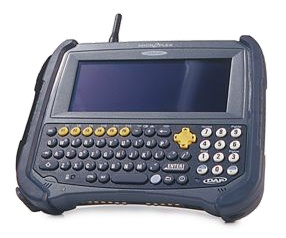 W
WA portable data terminal, or shortly PDT, is an electronic device that is used to enter or retrieve data via wireless transmission. They have also been called enterprise digital assistants (EDA), data capture mobile devices, batch terminals or just portables.
 W
WThe Silent 700, introduced in 1971, was a line of portable computer terminals manufactured by Texas Instruments in the 1970s and 1980s. Silent 700s printed with a 5 x 7 dot-matrix heating element onto a roll of heat-sensitive paper. Some models were equipped with an integrated acoustic coupler and modem that could receive data at 30 characters per second. Other models could be directly connected to computers at 300 bits/second (bps), and were sometimes used as the System console where a hard copy record of the activities would be retained for a period of time.
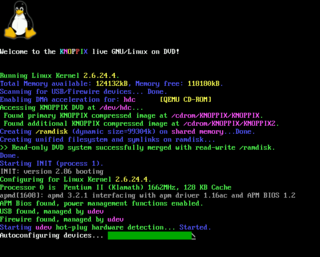 W
WThe system console, computer console, root console, operator's console, or simply console is the text entry and display device for system administration messages, particularly those from the BIOS or boot loader, the kernel, from the init system and from the system logger. It is a physical device consisting of a keyboard and a screen, and traditionally is a text terminal, but may also be a graphical terminal. System consoles are generalized to computer terminals, which are abstracted respectively by virtual consoles and terminal emulators. Today communication with system consoles is generally done abstractly, via the standard streams, but there may be system-specific interfaces, for example those used by the system kernel.
 W
WThe Tektronix 4010 series was a family of text-and-graphics computer terminals based on storage-tube technology created by Tektronix. Several members of the family were introduced during the 1970s, the best known being the 11-inch 4010 and 19-inch 4014, along with the less popular 25-inch 4016. They were widely used in the computer-aided design market in the 1970s and early 1980s.
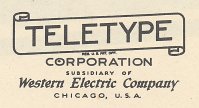 W
WThe Teletype Corporation, a part of American Telephone and Telegraph Company's Western Electric manufacturing arm since 1930, came into being in 1928 when the Morkrum-Kleinschmidt Company changed its name to the name of its trademark equipment. Teletype Corporation, of Skokie, Illinois, was responsible for the research, development and manufacture of data and record communications equipment, but it is primarily remembered for the manufacture of electromechanical teleprinters.
 W
WThe Teletype Model 33 is an electromechanical teleprinter designed for light-duty office use. It is less rugged and cost less than earlier Teletype machines. Teletype Corporation introduced the Model 33 as a commercial product in 1963 after being originally designed for the United States Navy. There are three versions of the Model 33:Model 33 ASR,, which has a built-in eight-hole punched tape reader and tape punch; Model 33 KSR, which lacks the paper tape reader and punch; Model 33 RO which has neither a keyboard nor a reader/punch.
 W
WA virtual console (VC) – also known as a virtual terminal (VT) – is a conceptual combination of the keyboard and display for a computer user interface. It is a feature of some Unix-like operating systems such as BSD, Linux, illumos and UnixWare in which the system console of the computer can be used to switch between multiple virtual consoles to access unrelated user interfaces. Virtual consoles date back at least to Xenix and Concurrent CP/M in the 1980s.
 W
WThe VT100 is a video terminal, introduced in August 1978 by Digital Equipment Corporation (DEC). It was one of the first terminals to support ANSI escape codes for cursor control and other tasks, and added a number of extended codes for special features like controlling the status lights on the keyboard. This led to rapid uptake of the ANSI standard, becoming the de facto standard for terminal emulators.
 W
WThe VT320 was an ANSI standard computer terminal introduced by Digital Equipment Corporation (DEC) in 1987. The VT320 was the text-only version, while the VT330 added monochrome ReGIS, Sixel and Tektronix 4010 graphics, and the VT340 added color.